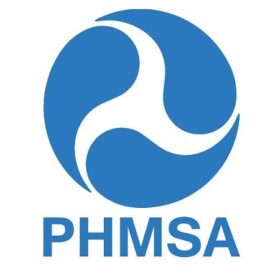Pursuant to the Federal Energy Regulatory Commission’s (“FERC” or “Commission”) “Notice of Technical Conference (“Notice”) and “Supplemental Notice of Technical Conference” (“Supplemental Notice”) on developments in natural gas index liquidity and transparency, the Interstate Natural Gas Association of America (“INGAA”) submits the following post-technical conference comments. INGAA is a trade association that advocates regulatory and legislative positions of importance to the natural gas pipeline industry in North America. INGAA is comprised of 26 members, representing the vast majority of the interstate natural gas transmission pipeline companies in the U.S. INGAA members operate almost 200,000 miles of pipelines, and serve as an indispensable link between natural gas producers and consumers.
I.Introduction
INGAA appreciates the opportunity to provide these comments following the Commission’s June 29 Technical Conference on developments in natural gas index liquidity and transparency. All INGAA members reference price indices in their FERC-jurisdictional natural gas tariffs. There is great variety in individual pipeline references to price indices in their tariffs. Some examples include tariff provisions involving cash-outs of imbalances, park and loan service, penalty calculations for violations of operational flow orders, capacity release transactions, and discounting. Additionally, some INGAA members use natural gas price indices as one of many pricing points to determine the price of their pipeline capacity. Accordingly, INGAA members have a significant interest in the Commission’s policies involving natural gas price indices and their use in FERC-jurisdictional natural gas tariffs.
II.The Commission Should Not Alter its Current Regulatory Model for the Use of Natural Gas Price Indices in FERC-Jurisdictional Natural Gas Tariffs.
FERC’s currently applicable standards that price index publishers must meet in order to be referenced in a FERC-jurisdictional natural gas tariff should not be revised or updated, because they remain relevant. In its 2003 Policy Statement on Natural Gas and Electric Price Indices (“2003 Policy Statement”), FERC established the following five standards. First, index developers must adopt a publicly available written code of conduct disclosing how they will obtain, treat, and maintain price data. Second, index developers must collect and publish complete information for individual transactions, including price, volume, buy/sell indicator, delivery/receipt location, transaction date/time, and term. Third, index developers must verify price data through various methods, including matching buys and sells and immediately contacting data providers about discrepancies. Fourth, index developers must undergo independent audits of their processes annually Lastly, index developers must ensure that all interested customers have reasonable access to published price reports on a timely basis.
The five standards described above remain relevant today and have allowed for robust natural gas price formation since their establishment in 2003. The standards provide foundational guidance to index developers regarding how they must operate to provide accurate and transparent transactional information. Moreover, the Commission’s established standards have fostered substantial confidence in natural gas price indices and their ability to reflect the value of natural gas accurately. This confidence, in turn, has permitted natural gas commodity markets to function effectively and efficiently.
Additionally, the minimum liquidity thresholds established by the Commission in 2004 remain appropriate. FERC’s currently applicable minimum liquidity thresholds establish the minimum average standards for volume traded, number of transactions, and number of counter parties. Furthermore, FERC established varying requirements for each of the three measurements of activity for daily or hourly indices, weekly indices, and monthly indices. These standards, like the FERC’s five standards established in 2003, remain relevant today, because they provide adequate certainty to all parties involved and facilitate confidence in the accuracy of individual price indices referenced in FERC-jurisdictional natural gas tariffs.
Relatedly, the liquidity of indices does not need to be reassessed periodically by FERC, or any other entity, because interstate pipeline operators and their shipper customers closely monitor the liquidity of price indices. If liquidity were to routinely fall below the minimum requirements set by the Commission, interstate pipeline operators and their shippers would notice quickly, and the pipeline operator subsequently would file a revised tariff with the Commission to reflect the change in liquidity at the previously referenced point. Accordingly, any periodic assessment of liquidity conducted by the FERC, or some other entity, would be redundant and unnecessary.
III.Conclusion
As discussed above, FERC’s current regulatory model for the use of natural gas price indices in FERC-jurisdictional tariffs remains appropriate. Due to this well-functioning regulatory model, INGAA members have substantial confidence in natural gas price indices as they are used in FERC-jurisdictional natural gas tariffs. INGAA members benefit from access, at reasonable terms and conditions, to multiple price index developers, and hope that this access continues. This availability, coupled with the proven regulatory model, allows natural gas pipeline tariffs to function effectively and efficiently.







